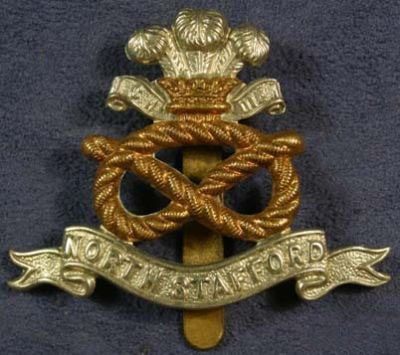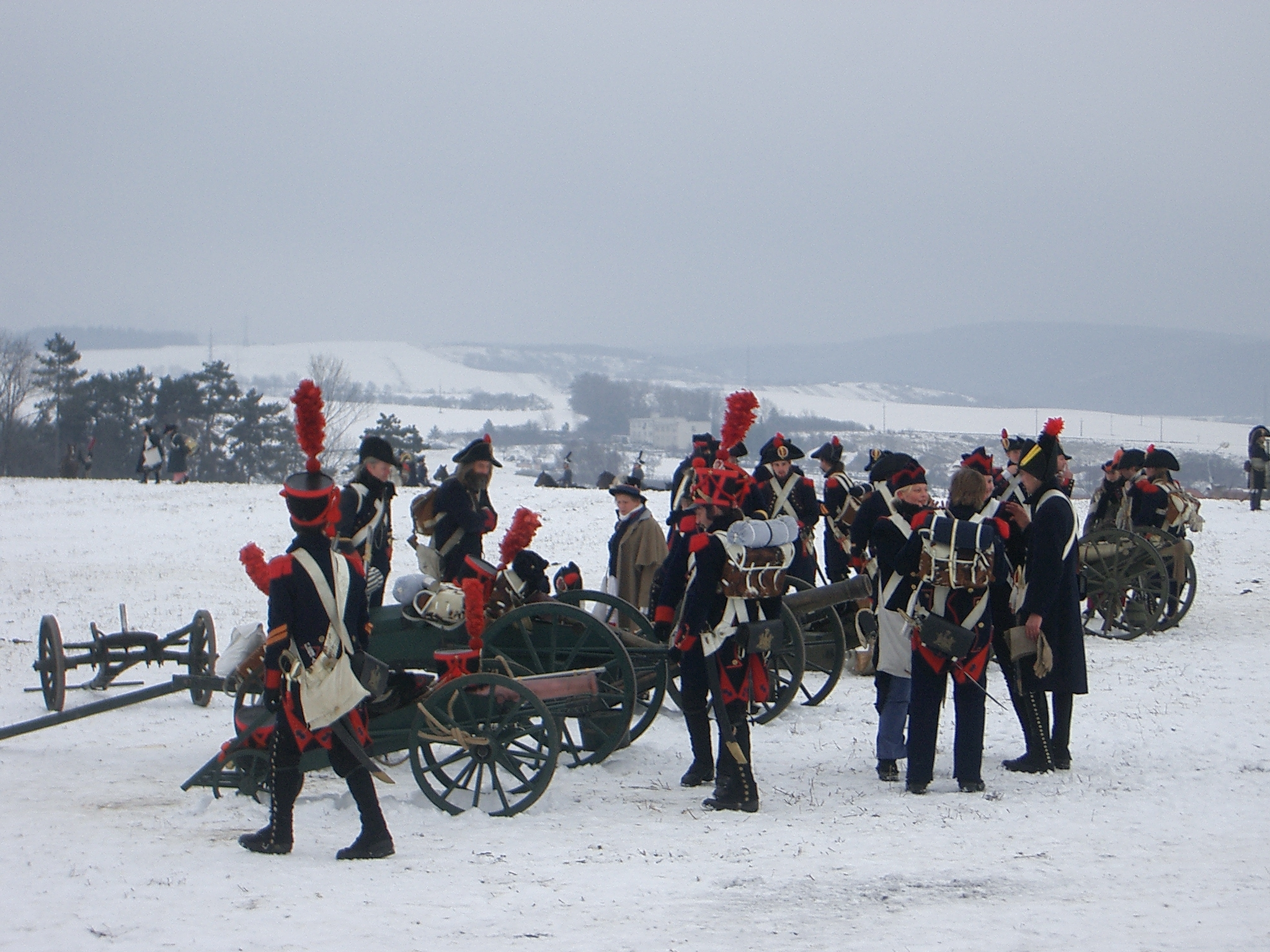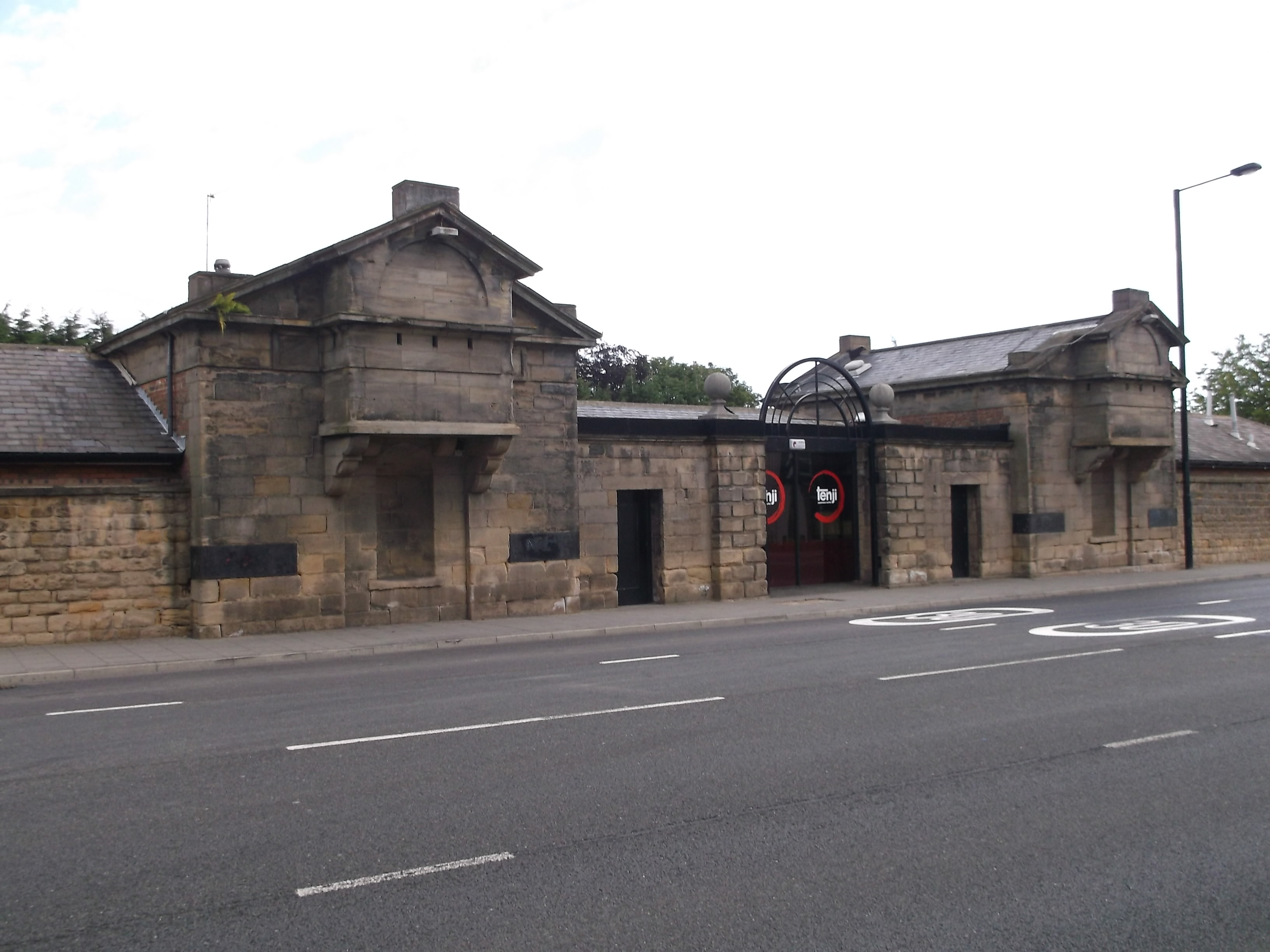|
8th Battalion, North Staffordshire Regiment (1940–42)
The 180th Field Regiment was a unit of the Royal Artillery, formed by the British Army during World War II. First raised in 1940 as infantry of the North Staffordshire Regiment, it was converted to the field artillery role in 1942, serving as a reserve unit in Home Defence. It was disbanded before the end of the war. 8th North Staffordshire Regiment In July 1940, shortly after the British Expeditionary Force was evacuated from Dunkirk, the North Staffordshire Regiment formed a new 8th Battalion. (A previous 8th (Service) Battalion had been raised as part of Kitchener's Army during World War I of 1914–18.)Frederick, p. 313. After initial training, the battalion joined a hone defence formation, 205th Independent Infantry Brigade (Home), when that was formed by No 5 Infantry Training Group on 10 October 1940. After briefly serving under 1st Infantry Division, the brigade was assigned to the North Midland Area command. It joined Lincolnshire County Division when that became op ... [...More Info...] [...Related Items...] OR: [Wikipedia] [Google] [Baidu] |
Field Artillery
Field artillery is a category of mobile artillery used to support armies in the field. These weapons are specialized for mobility, tactical proficiency, short range, long range, and extremely long range target engagement. Until the early 20th century, field artillery were also known as foot artillery, for while the guns were pulled by beasts of burden (often horses), the gun crews would usually march on foot, thus providing fire support mainly to the infantry. This was in contrast to horse artillery, whose emphasis on speed while supporting cavalry units necessitated lighter guns and crews riding on horseback. Whereas horse artillery has been superseded by self-propelled artillery, field artillery has survived to this day both in name and mission, albeit with motor vehicles towing the guns (this towed artillery arrangement is often called mobile artillery), carrying the crews and transporting the ammunition. Modern artillery has also advanced to rapidly deployable wheeled a ... [...More Info...] [...Related Items...] OR: [Wikipedia] [Google] [Baidu] |
Lincolnshire
Lincolnshire (abbreviated Lincs.) is a county in the East Midlands of England, with a long coastline on the North Sea to the east. It borders Norfolk to the south-east, Cambridgeshire to the south, Rutland to the south-west, Leicestershire and Nottinghamshire to the west, South Yorkshire to the north-west, and the East Riding of Yorkshire to the north. It also borders Northamptonshire in the south for just , England's shortest county boundary. The county town is Lincoln, where the county council is also based. The ceremonial county of Lincolnshire consists of the non-metropolitan county of Lincolnshire and the area covered by the unitary authorities of North Lincolnshire and North East Lincolnshire. Part of the ceremonial county is in the Yorkshire and the Humber region of England, and most is in the East Midlands region. The county is the second-largest of the English ceremonial counties and one that is predominantly agricultural in land use. The county is fourth-larg ... [...More Info...] [...Related Items...] OR: [Wikipedia] [Google] [Baidu] |
21st Army Group
The 21st Army Group was a British headquarters formation formed during the Second World War. It controlled two field armies and other supporting units, consisting primarily of the British Second Army and the First Canadian Army. Established in London during July 1943, under the command of Supreme Headquarters Allied Expeditionary Force (SHAEF), it was assigned to Operation Overlord, the Western Allied invasion of Europe, and was an important Allied force in the European Theatre. At various times during its existence, the 21st Army Group had additional British, Canadian, American and Polish field armies or corps attached to it. The 21st Army Group operated in Northern France, Luxembourg, Belgium, the Netherlands and Germany from June 1944 until August 1945, when it was renamed the British Army of the Rhine (BAOR). Western European theatre Normandy Commanded by General (later Field Marshal) Sir Bernard Montgomery, 21st Army Group initially controlled all ground forces in Ope ... [...More Info...] [...Related Items...] OR: [Wikipedia] [Google] [Baidu] |
D Day
The Normandy landings were the landing operations and associated airborne operations on Tuesday, 6 June 1944 of the Allied invasion of Normandy in Operation Overlord during World War II. Codenamed Operation Neptune and often referred to as D-Day, it was the largest seaborne invasion in history. The operation began the liberation of France (and later western Europe) and laid the foundations of the Allied victory on the Western Front. Planning for the operation began in 1943. In the months leading up to the invasion, the Allies conducted a substantial military deception, codenamed Operation Bodyguard, to mislead the Germans as to the date and location of the main Allied landings. The weather on D-Day was far from ideal, and the operation had to be delayed 24 hours; a further postponement would have meant a delay of at least two weeks, as the invasion planners had requirements for the phase of the moon, the tides, and the time of day that meant only a few days each month were d ... [...More Info...] [...Related Items...] OR: [Wikipedia] [Google] [Baidu] |
173rd Field Regiment, Royal Artillery
The 173rd Field Regiment was a unit of Britain's Royal Artillery (RA) during World War II. Originally formed to man beach defence batteries, it was later converted to field artillery. It served in Home Forces and supplied trained gunners to the fighting fronts, but saw no active service. It was disbanded after the war. 7th Defence Regiment After the British Expeditionary Force was evacuated from Dunkirk and the United Kingdom was threatened with invasion, a crash programme of installing coastal artillery batteries was implemented in the summer of 1940. Later, as the Home Defence strategy developed, the Royal Artillery formed a number of 'Defence Batteries' to deploy around the coastline for general beach defence. These were not part of the RA's Coast Artillery branch, nor were they included in the field forces under Commander-in-Chief, Home Forces, but equipped with whatever old guns were available they freed up scarce field artillery from static beach defence for the mobile c ... [...More Info...] [...Related Items...] OR: [Wikipedia] [Google] [Baidu] |
76th Infantry Division (United Kingdom)
The 76th Infantry Division was an infantry division of the British Army, which was formed in November 1941 and served during the Second World War. It was created when the Norfolk County Division, initially raised in 1940 to defend the Norfolk coast from a potential German invasion, was redesignated. The division maintained the defensive duties that had been assigned to it, prior to it being renamed, until late 1942 when it became a training formation. It was then responsible for providing final tactical and field training to soldiers who had already passed their initial training. After five additional weeks of training, the soldiers were posted to fighting formations overseas. The formation was used as a source of reinforcements for the 21st Army Group, that was fighting in the Normandy campaign. After all available British troops had left the United Kingdom for France, the division was disbanded in September 1944. In addition to the actual formation, a phantom 76th Infantry Di ... [...More Info...] [...Related Items...] OR: [Wikipedia] [Google] [Baidu] |
48 Inf Div -vector
{{number disambiguation ...
48 may refer to: * 48 (number) * one of the years 48 BC, AD 48, 1948, 2048 * ''48'' (novel) * 48'' (magazine) * "48", a song by Tyler, the Creator from the album ''Wolf'' * 48, a phone network brand of Three Ireland * "Forty Eight", a song by Karma to Burn from the album '' V'', 2011 See also * A48 (other) A48 may refer to : * A48 motorway (France), a road connecting the A43 and Grenoble * A48 road (Great Britain), a road connecting Gloucester, England and Carmarthen, Wales * Autovía A-48, a motorway under construction connecting Cadiz and Algeciras, ... [...More Info...] [...Related Items...] OR: [Wikipedia] [Google] [Baidu] |
48th (South Midland) Division
The 48th (South Midland) Division was an infantry division of the British Army. Part of the Territorial Force (TF) and raised in 1908, the division was originally called the South Midland Division, and was redesignated as the 48th (South Midland) Division in 1915. During the First World War, the division saw service on the Western Front before being transferred to the Italian Front in November 1917 and remaining there for the rest of the war. Reformed in 1920 in the Territorial Army (TA) as the 48th (South Midland) Infantry Division, it saw active service in the Second World War with the British Expeditionary Force (BEF) in Belgium and France before being evacuated from Dunkirk to the United Kingdom. It was converted into a training reserve division in December 1942, remaining in the United Kingdom in that status for the rest of the war. Disbanded after the war, the division was not reformed again. In both world wars, the division raised a second line reserve formation; the ... [...More Info...] [...Related Items...] OR: [Wikipedia] [Google] [Baidu] |
The National Archives (United Kingdom)
, type = Non-ministerial department , seal = , nativename = , logo = Logo_of_The_National_Archives_of_the_United_Kingdom.svg , logo_width = 150px , logo_caption = , formed = , preceding1 = , dissolved = , superseding = , jurisdiction = England and Wales, HM Government , headquarters = Kew, Richmond, Greater London TW9 4DU , region_code = GB , coordinates = , employees = 679 , budget = £43.9 million (2009–2010) , minister1_name = Michelle Donelan , minister1_pfo = Secretary of State for Digital, Culture, Media and Sport , minister2_name = TBC , minister2_pfo = Parliamentary Under Secretary of State , chief1_name = Jeff James , chief1_position = Chief Executive and Keeper of the Public Records , chief2_name = , chief2_position = , chief3_name = , chief3_position = , chief4_name = , chief4_position = , chief5_name = , chief5_position = , agency_type = , chief6_name = , chief6_position = , chief7_name = , chief7_position = ... [...More Info...] [...Related Items...] OR: [Wikipedia] [Google] [Baidu] |
Northern Command (United Kingdom)
Northern Command was a Home Command of the British Army from 1793-1889 and 1905–1972. Nineteenth century Great Britain was divided into military districts on the outbreak of war with France in 1793. The formation in the North, which included Northumberland, Cumberland, Westmorland and Durham, was originally based at Fenham Barracks in Newcastle upon Tyne until other districts were merged in after the Napoleonic Wars. In 1840 Northern Command was held by Major-General Sir Charles James Napier, appointed in 1838. During his time the troops stationed within Northern Command were frequently deployed in support of the civil authorities during the Chartist unrest in the northern industrial cities. Napier was succeeded in 1841 by Major-General Sir William Gomm, when the command included the counties of Northumberland, Cumberland, Westmorland, Durham, Yorkshire, Cheshire, Derbyshire, Lancashire, Nottinghamshire, Flintshire, Denbighshire and the Isle of Man, with HQ at Manchest ... [...More Info...] [...Related Items...] OR: [Wikipedia] [Google] [Baidu] |



